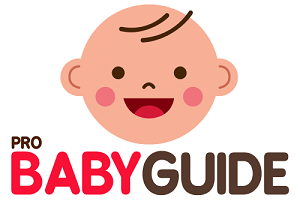Breastfeeding is a beautiful and natural way to nourish your baby, but it can also be a journey of learning and adaptation for both mom and baby. Many resources focus on the mechanics of breastfeeding, but understanding the different stages can be equally important. There are four main stages of breastfeeding, each with its unique characteristics and challenges.
Stage 1: Colostrum Power (First Few Days)
- Baby: Newborns have amazing instincts to find the breast. Their rooting reflex helps them search for the nipple, and their sucking is strong but not yet coordinated.
- Milk: Colostrum, a thick, yellowish fluid, is the first milk produced. It’s packed with antibodies, immune-boosting factors, and protein to help your baby adjust to the world outside the womb. Colostrum perfectly suits your baby’s tiny tummy, and frequent feeding helps establish your milk supply.
- Tips: Frequent skin-to-skin contact with your baby encourages feeding cues and helps regulate their body temperature. Be patient and allow your baby to take their time latching and feeding.
Stage 2: Transitional Milk Takes Over (Days 4-10)
- Baby: Your baby’s sucking becomes stronger and more coordinated as they get the hang of breastfeeding. They may start to nurse for longer stretches and have fewer feeding sessions.
- Milk: Your body transitions from producing colostrum to mature milk. Transitional milk is thinner and whiter, containing more lactose (sugar) to meet your baby’s growing energy needs.
- Tips: This stage can sometimes be referred to as a “growth spurt” for your baby, and they may seem hungrier than usual. Continue offering the breast frequently to meet their needs and stimulate your milk supply to adjust.
Related: 10 Best Pacifiers for Breastfed Baby (3-6months) in 2024
Stage 3: Establishing Supply and Routine (Weeks 2-6)
- Baby: Your baby’s feeding patterns become more regular, and they may settle into a feeding schedule. Their sucking becomes even more efficient, and they may nurse for shorter periods more frequently.
- Milk: Your mature milk supply is established. It’s a thin, bluish-white milk that perfectly meets your baby’s nutritional needs for growth and development.
- Tips: Pay attention to feeding cues like rooting, fussiness, or hand-to-mouth movements. Some moms experience a dip in their milk supply around this time. Frequent feeding and staying hydrated are crucial to maintain a good supply.
Related: Top 10 best baby loungers (our top pick)
Stage 4: Breastfeeding Through Introduction of Solids (6 Months Onward)
- Baby: As your baby starts solids around 6 months, their breastfeeding frequency may decrease. However, breast milk remains an important source of nutrients and antibodies throughout the first year and beyond.
- Milk: Your milk composition adjusts to meet your baby’s changing needs. It becomes richer in fat content to provide them with sustained energy.
- Tips: Breastfeeding continues to provide comfort and closeness for your baby. Offer the breast on demand alongside solid foods, and allow your baby to guide their feeding cues.
Remember: Every breastfeeding journey is unique. These stages are a general guideline, and there can be variations in timing and experience. If you have any concerns or questions about your baby’s feeding or milk supply, contact a lactation consultant or pediatrician for support.




